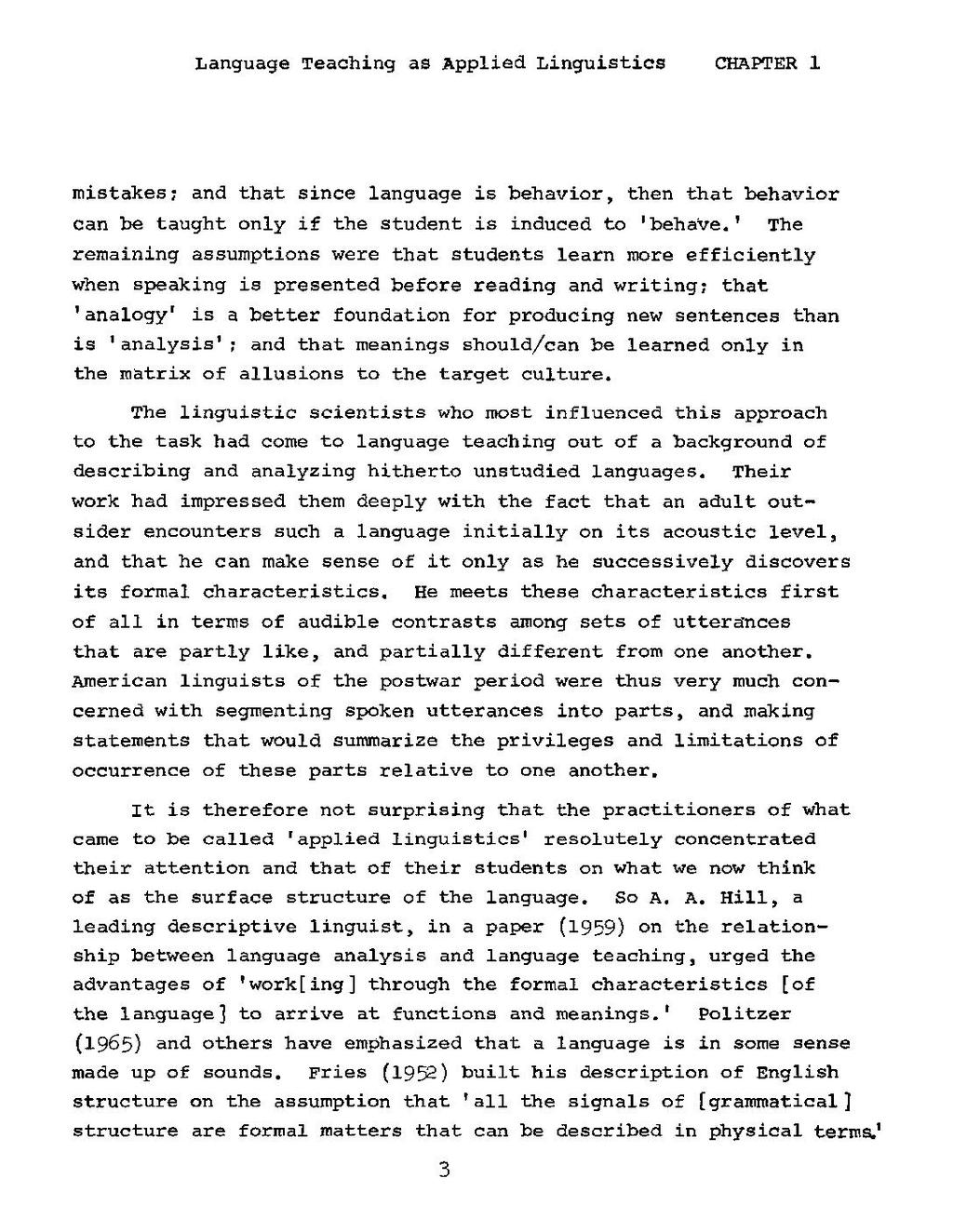mistakes; and that since language is behavior, then that behavior can be taught only if the student is induced to 'behave.' The remaining assumptions were that students learn more efficiently when speaking is presented before reading and writing: that 'analogy' is a better foundation for producing new sentences than is 'analysis'; and that meanings should/can be learned only in the matrix of allusions to the target culture.
The linguistic scientists who most influenced this approach to the task had come to language teaching out of a background of describing and analyzing hitherto unstudied languages. Their work had impressed them deeply with the fact that an adult outsider encounters such a language initially on its acoustic level, and that he can make sense of it only as he successively discovers its formal characteristics. He meets these characteristics first of all in terms of audible contrasts among sets of utterances that are partly like, and partially different from one another. American linguists of the postwar period were thus very much concerned with segmenting spoken utterances into parts, and making statements that would summarize the privileges and limitations of occurrence of these parts relative to one another.
It is therefore not surprising that the practitioners of what came to be called 'applied linguistics' resolutely concentrated their attention and that of their students on what we now think of as the surface structure of the language. So A. A. Hill, a leading descriptive linguist, in a paper (1959) on the relationship between language analysis and language teaching, urged the advantages of 'work[ing] through the formal characteristics [of the language] to arrive at functions and meanings.' Politzer (1965) and others have emphasized that a language is in some sense made up of sounds. Fries (1952) built his description of English structure on the assumption that 'all the signals of [grammatical] structure are formal matters that can be described in physical terms.'
3
